History/ES 247 Reading Guide
The Coast: The Earliest Settlements
- E.A. Churchill, “A Most Ordinary Lot of Men: The Fishermen at Richmond Island, Maine, in the Early Seventeenth Century,” New England Quarterly 57 (1984), 184-204. JSTOR
- Alaric Faulkner, “Archaeology of the Cod Fishery: Damariscove Island,” Historical Archaeology 19 (1985), 57-86. (e-reserve) JSTOR
- Neill DePaoli, “Beaver, Blankers, Liquor, and Politics: Pemaquid’s Fur Trade, 1614-1760,” Maine History 33.3-4 (1993-4), 166-201. (e-reserve)
Further reading:
- Barbara Rumsey, “Waldron vs. Smith: Shipwreck at the Eastward, 1671,” Maine History 39:2 (Summer 2000): 69-94.
- Emerson W. Baker, The Clarke & Lake Company: The Historical Archaeology of a Seventeenth-Century Maine Settlement Occ. Pubs. in Me. Arch. 4 (1985)
- Robert L. Bradley and Helen B. Camp, The Forts of Pemaquid, Maine: An Archaeological and Historical Study Occ. Pubs. in Me. Arch. 10 (1994)
- Leon F. Cranmer, Cushnoc: The History and Archaeology of Plymouth Colony Traders on the Kennebec Occ. Pubs. in Me. Arch. 7 (1990)
- Alaric Faulkner and Gretchen Fearon Faulkner, The French at Pentagoet, 1635-1674: An Archaeological Portrait of the Acadian Frontier Occ. Pubs. in Me. Arch. (1987)
The three articles about early Maine settlements discuss the kinds of economically-oriented communities that early settlers established in these coastal environments, and suggest (whether explicitly or implicitly) the interplay between community and environment. The evidence these scholars present supports the argument that the Massachusetts Bay “Puritan” model of colonization and community development does not characterize the motives and settlement patterns of many emigrants to northern New England.
- What influences and motives shaped the early settlements, both temporary and permanent, on the coast of Maine in the seventeenth century?
- How did the motives of both the sponsors (whether companies, councils, or individuals) and the settlers shape the way that early settlers viewed and used the environment?
- How does De Paoli’s account of the beaver trade revise our understanding of the nature and importance of Native-American and Euro-American interaction?
- To what extent did the environment seem to affect or influence Euro-American visions of colonization in the New World?
- Note: these are dense readings. Consider the specific evidence [sources] and the interpretations [methodological perspectives] that each scholar presents. But also keep in mind the larger, comparative questions that we will be discussing in class.
The four further readings are part of a series on Maine Archaeology. They offer (with pictures) descriptions of their efforts to discover/uncover some early communities, and they describe and interpret some of the material artifacts that they found. Since the archival evidence for early communities can be scant to non-existent, these archaeological efforts are invaluable. If you have time, look through one or more of these studies, after you have finished the articles.
Map of seventeenth-century fishing and trading stations in Maine.
- Map of fishing and trading stations, labeled by date of settlement.
Postcards:
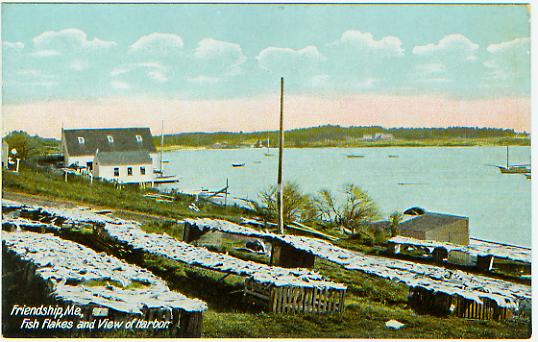
Friendship, Me., Fish Flakes and View of Harbor (c.1908)
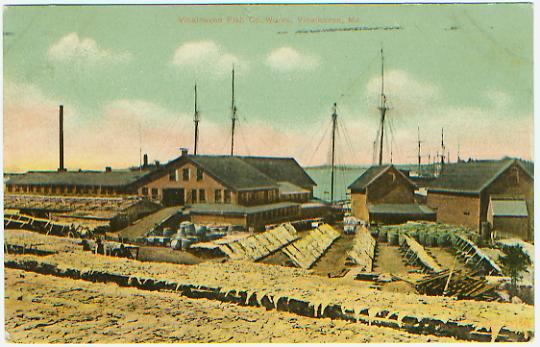
Vinalhaven Fish Co. Works. Vinalhaven, Me. (c.1914)
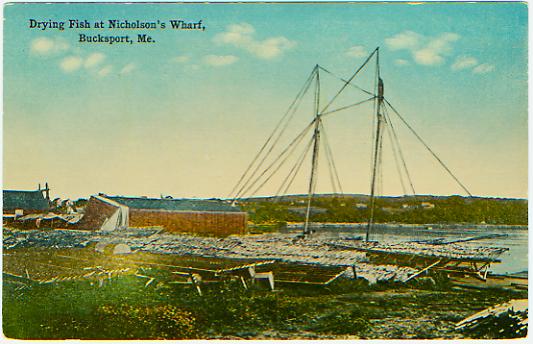
Drying Fish at Nicholson's Wharf, Bucksport, Me. (c.1920)
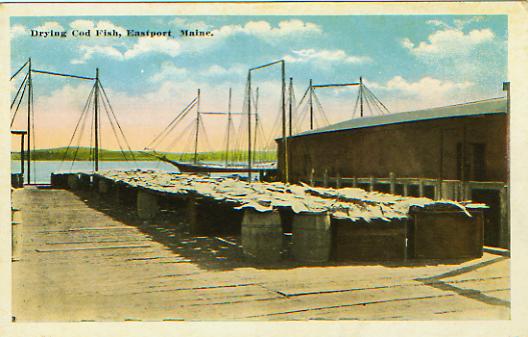
Drying Cod Fish, Eastport, Me. (c.1925)
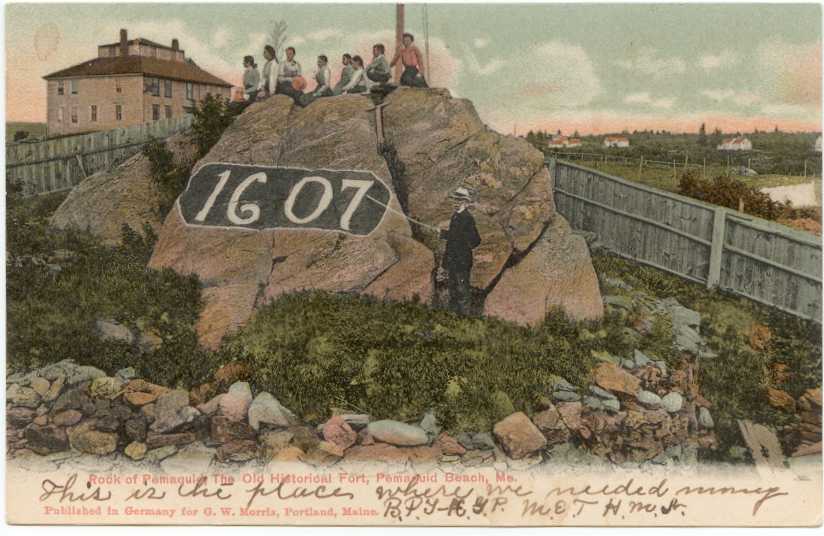
Rock of Pemaquid: The Old Historical Fort, Pemaquid Beach, Me. (c.1905)
- This is the place where we needed money B.P.J–H.G.P M.E.T H.M.Jr.
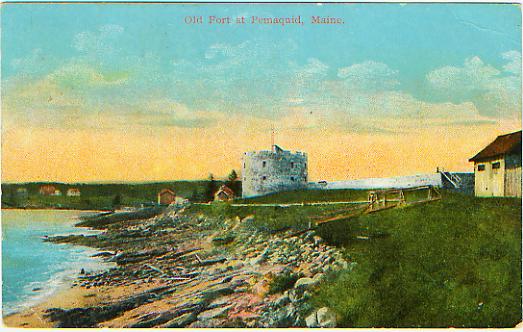
Old Fort at Pemaquid, Maine [Fort William Henry, est. 1692] (c. 1910)
- Where Miss P's Gov. Phips will reside. Lovingly yours, Flora B. Clark, Damariscotta
